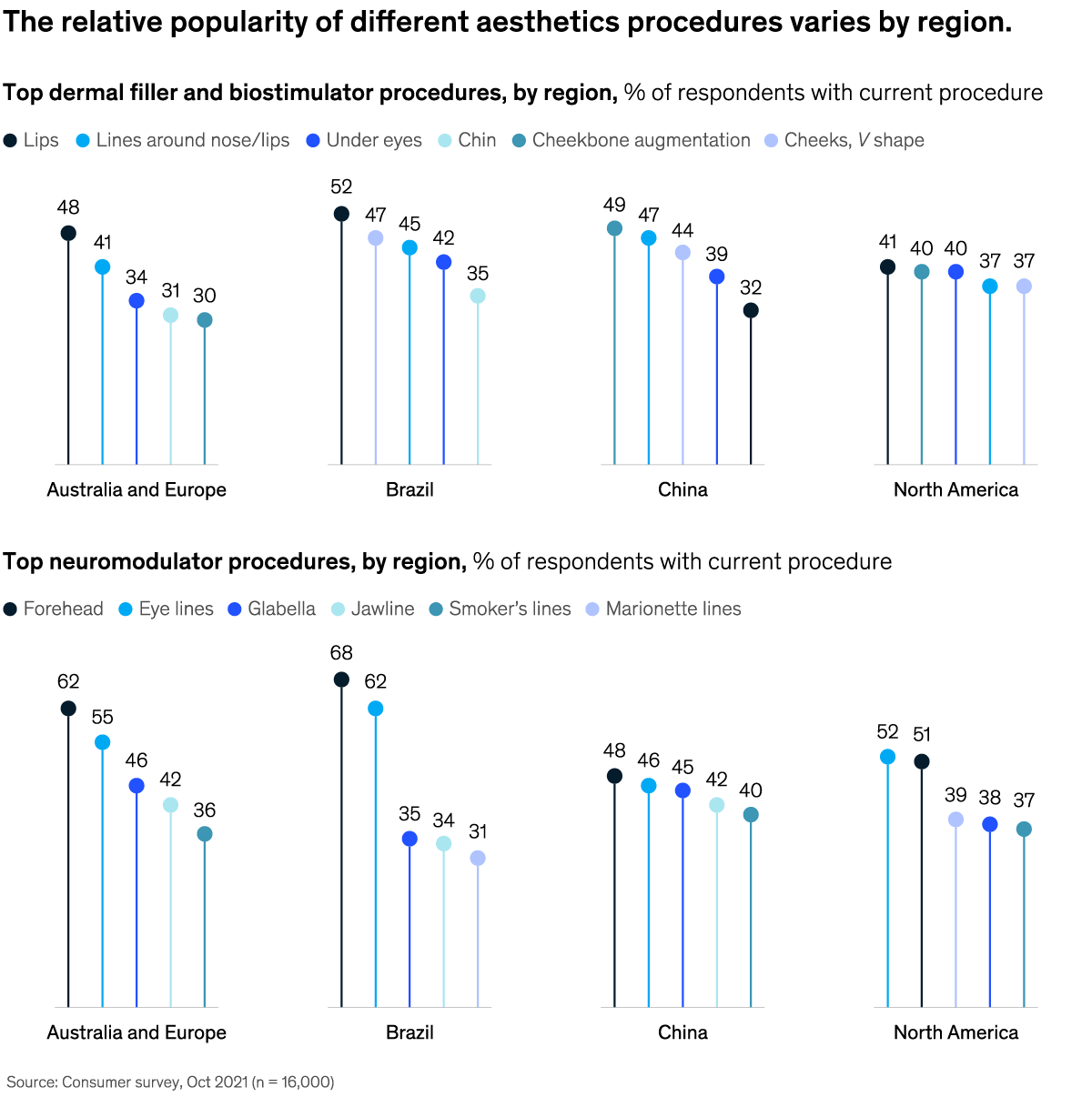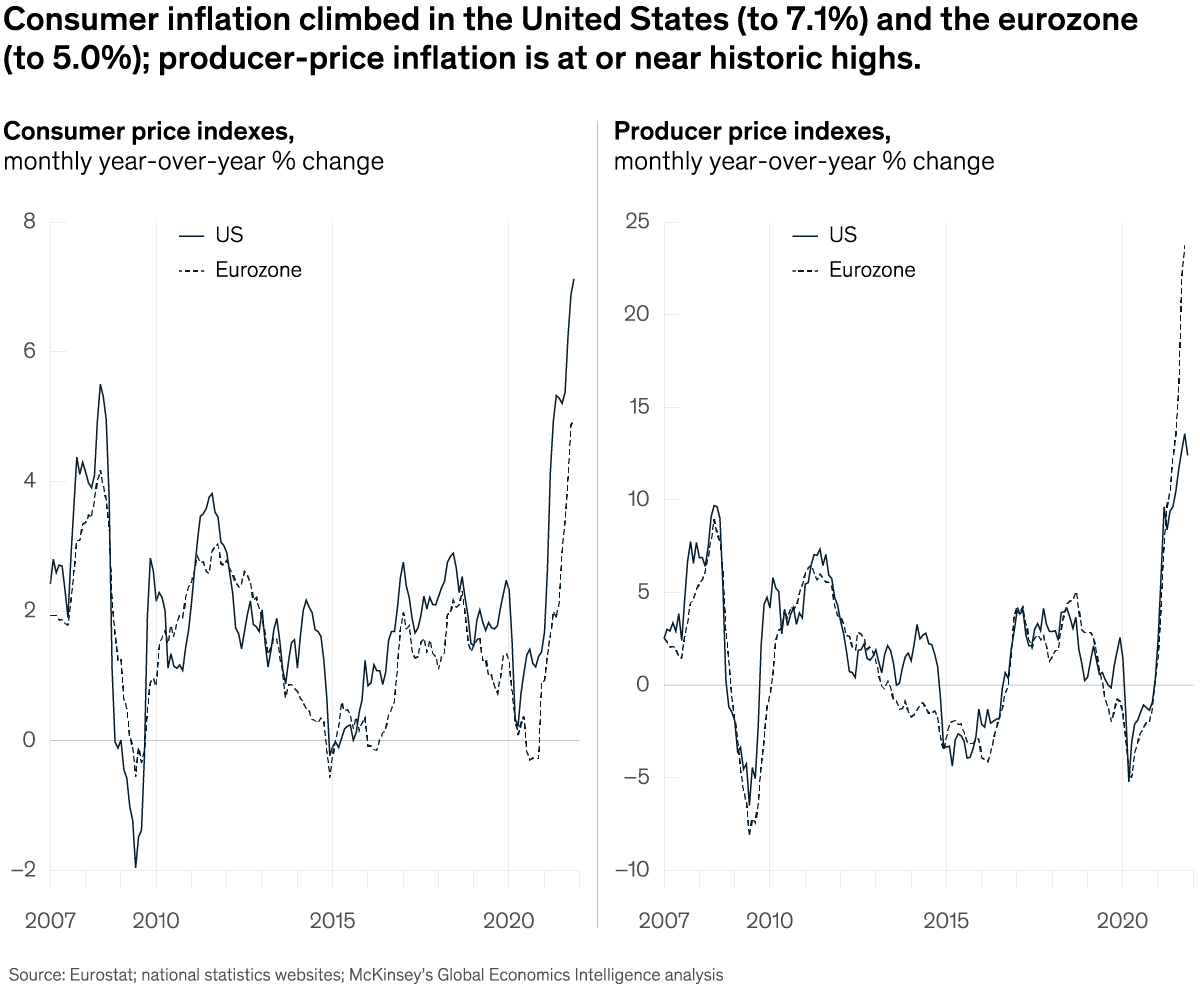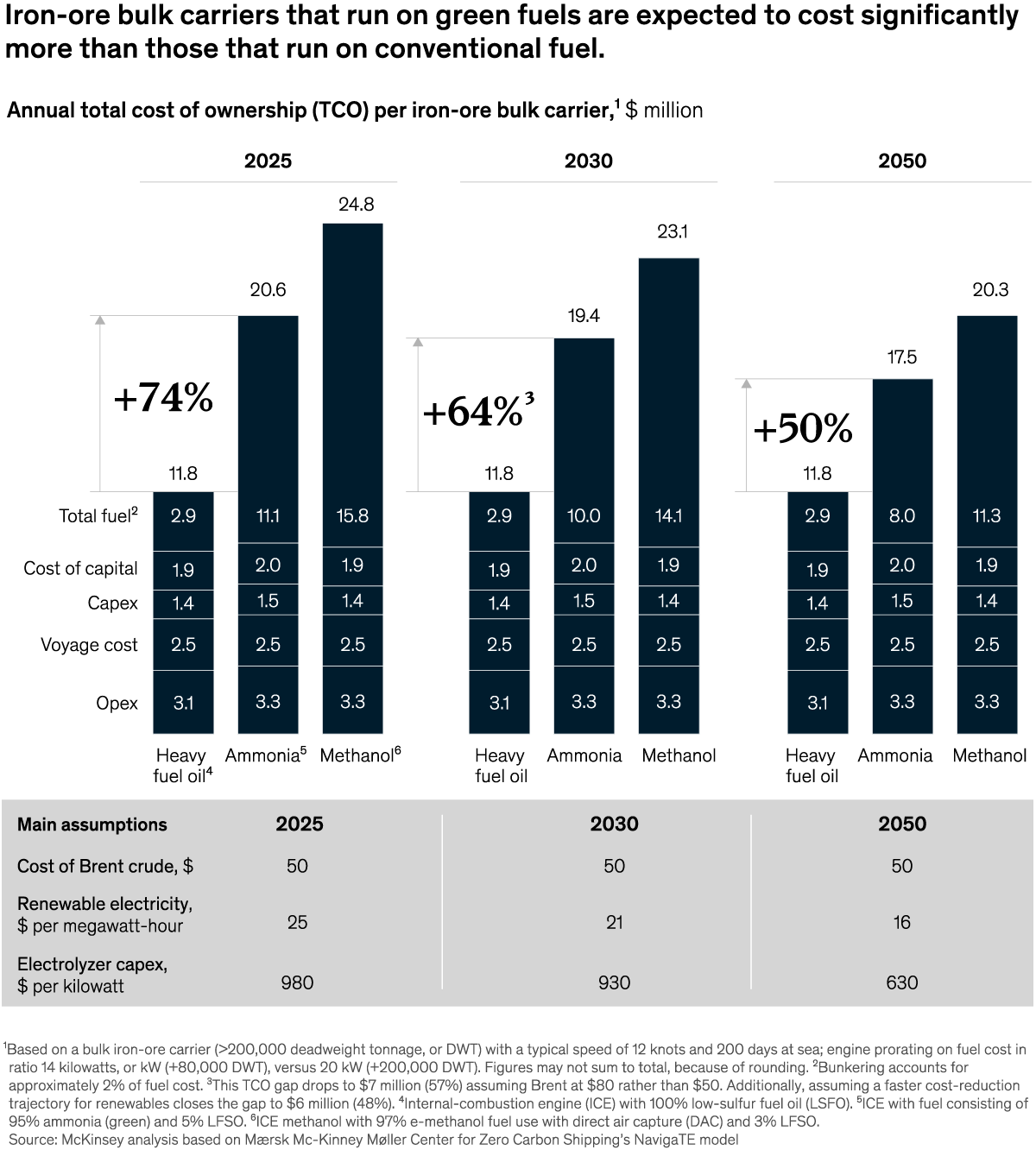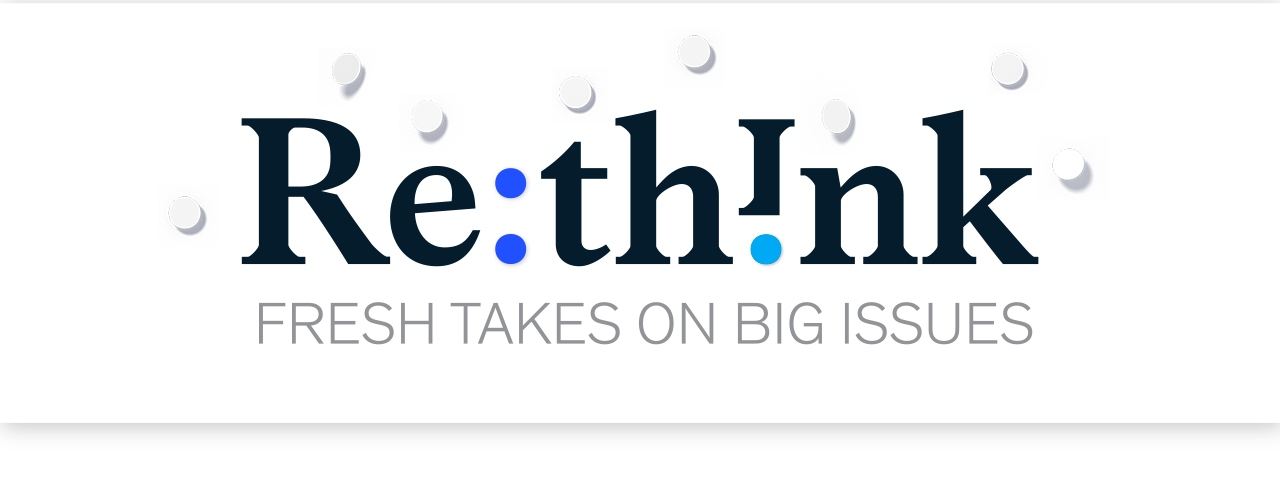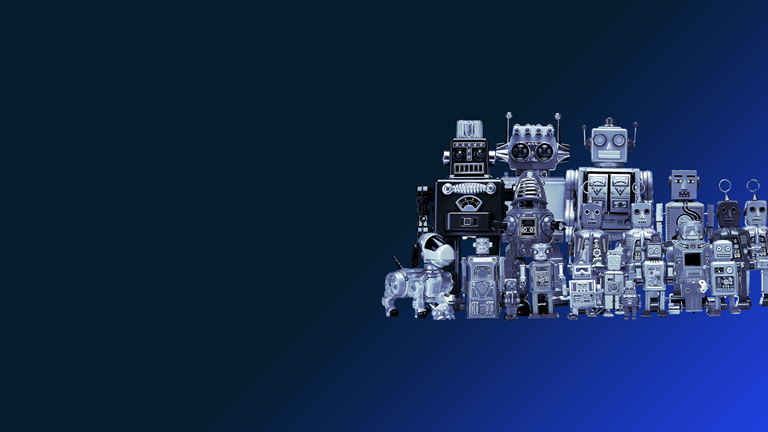Archives
- By thread 5482
-
By date
- June 2021 10
- July 2021 6
- August 2021 20
- September 2021 21
- October 2021 48
- November 2021 40
- December 2021 23
- January 2022 46
- February 2022 80
- March 2022 109
- April 2022 100
- May 2022 97
- June 2022 105
- July 2022 82
- August 2022 95
- September 2022 103
- October 2022 117
- November 2022 115
- December 2022 102
- January 2023 88
- February 2023 90
- March 2023 116
- April 2023 97
- May 2023 159
- June 2023 145
- July 2023 120
- August 2023 90
- September 2023 102
- October 2023 106
- November 2023 100
- December 2023 74
- January 2024 75
- February 2024 75
- March 2024 78
- April 2024 74
- May 2024 108
- June 2024 98
- July 2024 116
- August 2024 134
- September 2024 130
- October 2024 141
- November 2024 171
- December 2024 115
- January 2025 216
- February 2025 140
- March 2025 220
- April 2025 233
- May 2025 239
- June 2025 303
- July 2025 265
- August 2025 31
-
A belated welcome to McKinsey.com, MD Abul
McKinsey&Company
Get started with our most popular content .
We recently noticed that you and a small number of other registered readers never received an email properly welcoming you to McKinsey.com, and we’re so sorry for the oversight. It’s no reflection on how glad we are to have you as a reader. We hope you’ll forgive our tardiness and take a moment to start exploring the site, beginning with a few of our most popular articles, theme pages, and newsletters.
Warmly,
McKinsey Global PublishingMost popular articles 
If we’re all so busy why isn’t anything getting done? With endless meetings, incessant emails, and casts of thousands, companies have mastered the art of unnecessary interactions. Winning in the next normal requires much more focus on true collaboration. Collaborate and innovate 

A military veteran knows why your employees are leaving She also knows what you can—and can’t—do about it. Here are three surprising lessons from a veteran of the wars in Iraq and Afghanistan. Understand the Great Resignation 

The role of ESG and purpose Answering three questions about purpose and environmental, social, and governance issues can help business leaders zero in on what matters most for their organizations. Pursue purpose Most popular themes 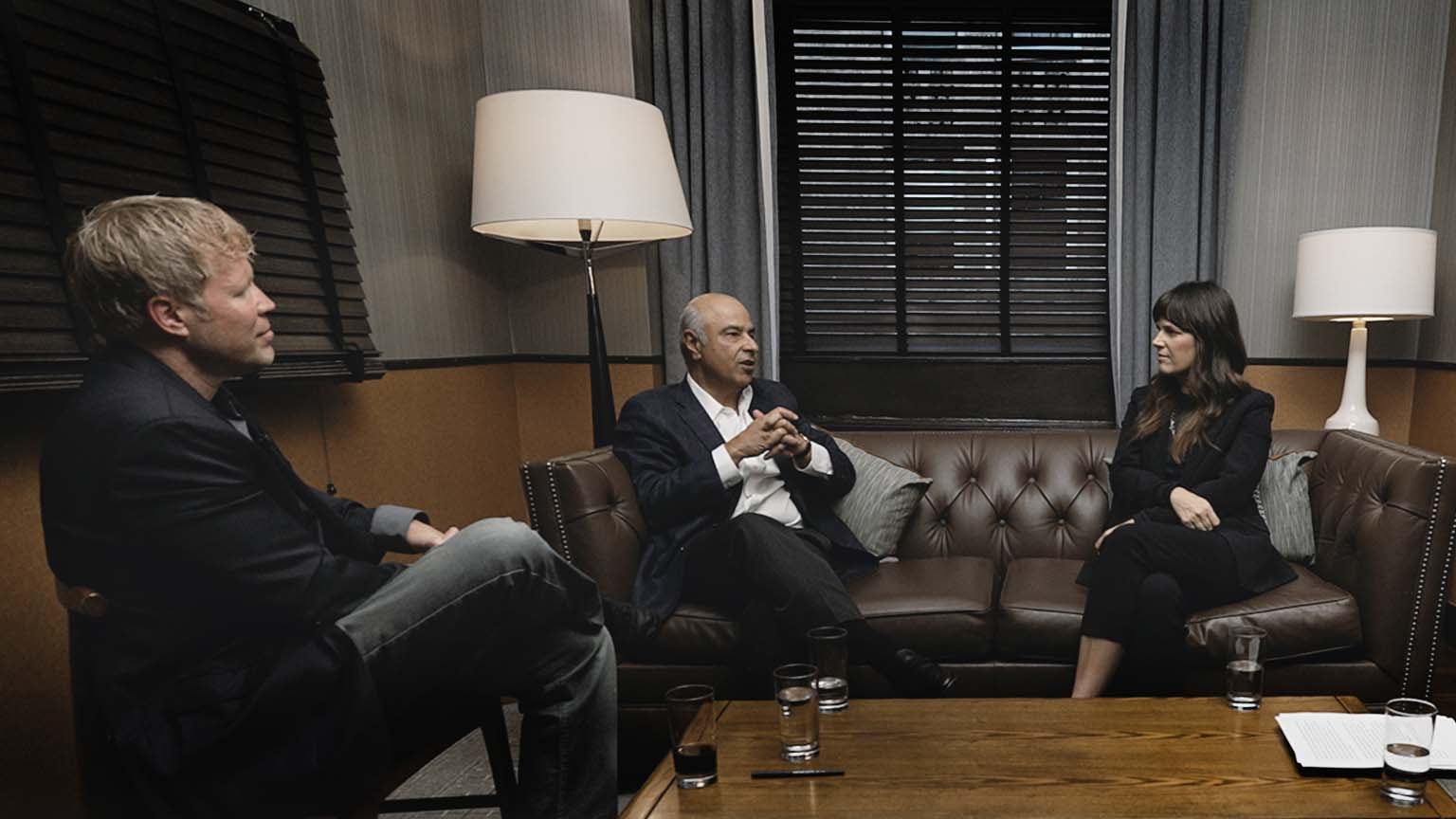
The six mindsets of excellent CEOs: Part 1 

Quitting time? Not so fast: here’s what’s driving the Great Resignation and what to do about it 

How to think like a kid Most popular newsletters 
Employees are exhausted—and exiting. Offering excellent employee experience is all the more crucial. 

The resilient organization: A leader’s guide 

How to get a grip on unnecessary interactions at work Sample and sign up for our 40+ newsletters and topical alerts at mckinsey.com/subscriptions. 

Follow our thinking 


McKinsey Insights - Get our latest
thinking on your iPhone, iPad, or Android

This email contains information about McKinsey’s research, insights, services, or events. By opening our emails or clicking on links, you agree to our use of cookies and web tracking technology. For more information on how we use and protect your information, please review our privacy policy. You received this email because you are a registered member of mckinsey.com. Manage subscriptions | Unsubscribe Copyright © 2022 | McKinsey & Company, 3 World Trade Center, 175 Greenwich Street, New York, NY 10007
by "McKinsey & Company" <publishing@email.mckinsey.com> - 01:26 - 13 Feb 2022 -
The week in charts
the Daily read
Consumer inflation, green shipping, aesthetic treatments, and more .
Share this email 



ALL THE WEEK’S DATA THAT'S FIT TO VISUALIZE 
Our Charting the path to the next normal series offers a daily chart that helps explain a changing world—during the pandemic and beyond. In case you missed them, this week’s graphics explored the increase of investments in space by private companies, the reluctance of Gen Z seeking mental-health treatments, the cost of green shipping, and how the popularity of aesthetic treatments vary by region. FEATURED CHART Running hot 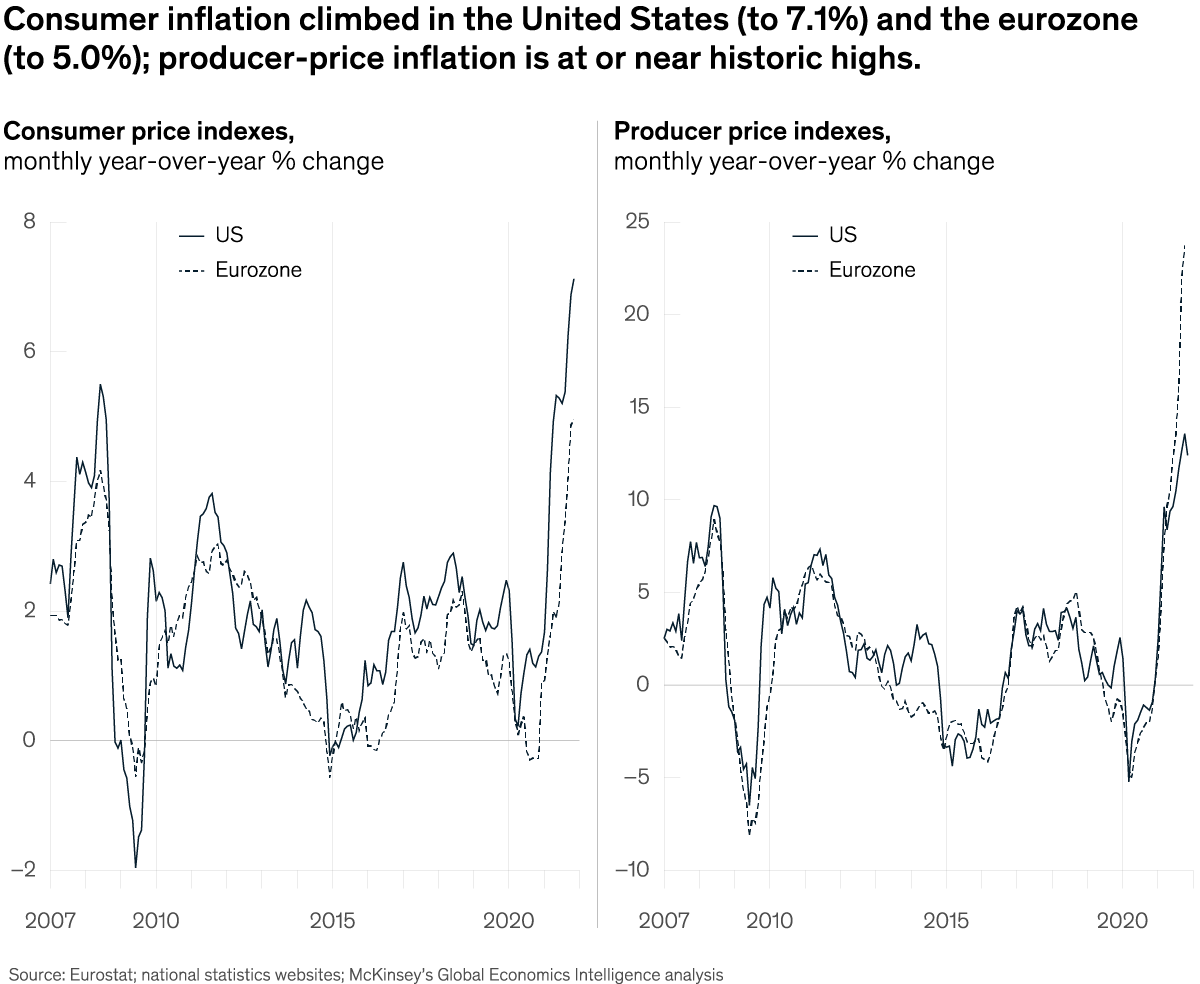
See more 



This week’s other select charts Private players stake their place in space Gen Z reluctant to seek behavioral-health help Green shipping won't be cheap Smooth operator 

Follow our thinking 



Share these insights Did you enjoy this newsletter? Forward it to colleagues and friends so they can subscribe too.
Was this issue forwarded to you? Sign up for it and sample our 40+ other free email subscriptions here.This email contains information about McKinsey’s research, insights, services, or events. By opening our emails or clicking on links, you agree to our use of cookies and web tracking technology. For more information on how we use and protect your information, please review our privacy policy. You received this email because you subscribed to The Week in Charts newsletter. Manage subscriptions | Unsubscribe Copyright © 2022 | McKinsey & Company, 3 World Trade Center, 175 Greenwich Street, New York, NY 10007
by "McKinsey Week in Charts" <publishing@email.mckinsey.com> - 03:29 - 12 Feb 2022 -
A futurist's view on synthetic biology
the Daily read
Understand tomorrow's technology .
Share this email 



AN ARTICLE A DAY, PICKED BY OUR EDITORS 
Have you ever wanted to reinvent yourself? If you’ve thought about change during the pandemic, you’re not alone, but futurist Amy Webb is looking at the idea of transformation on a molecular level. Her new book, The Genesis Machine: Our Quest to Rewrite Life in the Age of Synthetic Biology, examines cellular engineering and the possibilities of a world where “it’s possible to reprogram the fundamental units of life.” From canceling aging to living underground, synthetic biology provides methods for reinvention that are a bit more advanced than a new pandemic haircut. Check out the latest interview from our Author Talks series to understand the potential of synthetic biology—and how it could help us create better futures. — Babi Oloko, digital editor, New York 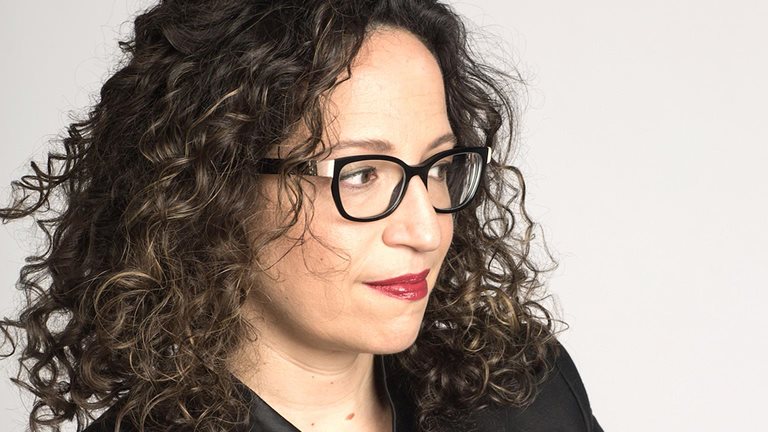
Author Talks: Hacking into humanity In the next decade, Amy Webb predicts that synthetic biology will be as common as artificial intelligence. Understand tomorrow's technology 

Quote of the Day —Senior partner Drew Ungerman on the value of going off script when he led a senior client meeting, in the latest episode of My Rookie Moment 
Chart of the Day See today’s chart 
Also New 

COVID-19: Implications for business Our latest perspectives on the coronavirus outbreak, the twin threats to lives and livelihoods, and how organizations can prepare for the next normal. Get updated 


Global Economics Intelligence executive summary, January 2022 Industry and trade in goods grow on strong consumer demand; the pandemic wave, inflation, and geopolitical tensions present risks to faster growth in 2022. Get updated 


The McKinsey Crossword: Author Talks | No. 62 Sharpen your problem-solving skills the McKinsey way, with our weekly crossword. Each puzzle is created with the McKinsey audience in mind, and includes a subtle (and sometimes not-so-subtle) business theme for you to find. Answers that are directionally correct may not cut it if you’re looking for a quick win. Play now 


Follow our thinking 



Share these insights Did you enjoy this newsletter? Forward it to colleagues and friends so they can subscribe too.
Was this issue forwarded to you? Sign up for it and sample our 40+ other free email subscriptions here.This email contains information about McKinsey’s research, insights, services, or events. By opening our emails or clicking on links, you agree to our use of cookies and web tracking technology. For more information on how we use and protect your information, please review our privacy policy. You received this email because you subscribed to the Daily Read newsletter. Manage subscriptions | Unsubscribe Copyright © 2022 | McKinsey & Company, 3 World Trade Center, 175 Greenwich Street, New York, NY 10007
by "McKinsey Daily Read" <publishing@email.mckinsey.com> - 06:31 - 11 Feb 2022 -
How Goldilocks might approach the bear of transformation
The Shortlist
Getting the numbers just right .
Share this email 



Our best ideas, quick and curated | FEBRUARY 11, 2022 View in browser 
This week, we look at how companies can avoid the common pitfalls that befall most transformations. Plus, potential solutions for the nursing crisis from a McKinsey senior partner—herself a registered nurse—and the trends shaping the sporting-goods industry in 2022. 
What makes a transformation successful? Often, companies apply the term “transformation” loosely to any form of change, however minor or routine. But McKinsey looks at transformation in a more comprehensive way: as an intense, organization-wide program to enhance performance (an earnings improvement of 25 percent or more) that also boosts organizational health. When such transformations succeed, they radically improve important business drivers, such as topline growth, capital productivity, cost efficiency, operational effectiveness, customer satisfaction, and sales excellence. A longer-term horizon. After adapting to the COVID-19 pandemic and new ways of working, many employees may expect that change is the new constant. But because successful transformations instill the importance of rallying around a common vision and strategy, they change culture and mindsets in a way that allows companies to improve their results year after year. And they can energize a workforce if done correctly. The exception, not the rule. Still, the average success rate of a comprehensive transformation remains dramatically low. According to a recent McKinsey Global Survey, less than one-third of respondents—all of whom had been part of a transformation in the past five years—say their companies’ transformations have been successful at both improving organizational performance and sustaining those improvements over time. The difference between success and failure isn’t whether an organization follows a specific subset of actions but rather how many actions it takes, including adapting goals for employees at all levels. The 7 percent solution. In companies big and small, successful transformations ultimately affect every worker. Nevertheless, leaders sometimes hesitate to bring the whole group on board at the start of a transformation because doing so can use up too much energy, attention, and resources. At the same time, it’s a mistake to keep the core transformation team small. So what’s the minimum level of involvement? When looking at data from 60 organizations that are at least two years into their transformations, McKinsey discovered that transformations with at least 7 percent of employees owning part of the transformation are twice as likely as those with less than 7 percent initiative ownership to have TSR in excess of their representative sector and geographic stock indexes. Digital guardians. Digital transformations, too, require widespread involvement. They are business-model reinventions that require different functions across an organization to work together in new ways and can happen only through large-scale investments in building an entirely new set of capabilities. The role that can make that level of sustained change happen is the CEO. The most successful CEOs prioritize tech and data in two ways: they obsess about how to apply tech and data to solving business problems or finding new opportunities, and they make organizational changes to ensure that tech and data are embedded in the business. CEOs shouldn’t tolerate a structure where the business sets requirements on which IT must deliver. Rather, they should develop an operating model where technology and business teams collaborate on developing and delivering digital products and services. Show them the … financial incentives. While some employees may throw themselves into improvement programs for the challenge or love of the job, companies that use generous and specific financial incentives can significantly improve the odds of their transformations’ success while unleashing sustainable value. This article looks at seven principles that can help ensure that the programs achieve the desired outcomes. 
OFF THE CHARTS Coal prices and steelmaking’s future Demand for coking coal, an essential raw material in the production of steel, was extremely strong in 2021 as the wider global economy recovered from its sharp contraction at the height of the COVID-19 crisis—even as supply chain issues constricted availability. Safety challenges and flooding affected domestic mines in China; border closures between China and Mongolia, as well as strikes in the US, also curtailed trade. In addition, diplomatic tensions between Australia and China compounded the situation. That confluence of events created tightness in the market and contributed to surging prices for coking coal. McKinsey looks at this long-term trend that may mean that prices stay elevated. 
Check out our chart of the day here. 

PODCAST Who’s taking care of the nurses? A recent McKinsey survey found that more than 30 percent of nurses in the US are thinking of leaving direct patient care. The same is true in healthcare systems around the world. McKinsey recently spoke with Gretchen Berlin, a registered nurse and McKinsey senior partner, on the state of nursing and ways to improve the work experience of nurses, practically and emotionally. “A lot of it comes down to the support and recognition that [nurses] feel in their workplace from their leaders, their managers, their team, and through ensuring there’s sufficient staffing, sufficient respite, and gratitude,” Berlin says. 
MORE ON MCKINSEY.COM Sporting goods 2022: The new normal is here | The sporting-goods industry continues to evolve amid increased health awareness, shifting channel preferences, and rising sustainability concerns. Sporting-goods players will need to adapt to five trends shaping the industry in 2022. CIO perspectives on leading agile change | In a panel discussion, chief information officers from the banking and telecom industries come together to talk about challenges and lessons learned from leading agile transformations. Building the cloud talent you need | Despite the fact that there is more than $1 trillion of new value at stake in the cloud, organizations are struggling to capture those benefits because they don’t have the right talent in place. Here are six practical ways to build capabilities. 


THREE QUESTIONS FOR Kate Van Akin Kate Van Akin, a senior expert based in McKinsey’s London office, works with leaders on engaging employees in organizational change. She recently began posting her favorite poetry on LinkedIn in a series she calls Friday Pause. What inspired you to launch Friday Pause? I was taking a walk in Richmond Park on a Friday morning in August when I heard a poem called “Fast forward” on one of my favorite podcasts, Turning Towards Life. The poem, by Debbie Danon, is about how we try to avoid uncomfortable feelings through distractions. One part really hits home: And then there are moments,
Quiet still moments
Before my itchy finger can hit the button.
I realize that fast forward isn’t doing what it promised.I am acutely aware of how true this is for pretty much everyone in the world today—how much we multitask in the name of productivity, suppress our feelings rather than listen to what they are trying to tell us, and therefore fail to be fully present for ourselves and others and how all these coping tactics aren’t doing what they promised. Those feelings and nagging doubts don’t go away; online shopping doesn’t buy happiness and a sense of inner peace. I imagine this lack of presence causes some amount of pain for people, though many might not be aware of it, and I wanted to offer a small moment of pause through poetry. As soon as I got home, I sat down at my computer and wrote my first post on LinkedIn. I figured I’d iterate and fail fast. After all, isn’t that the whole spirit of the agile approach to work we write about so often? Why poetry? For those of us used to fast-forwarding through life, I believe poetry can be a simple yet powerful way to begin reconnecting with ourselves. There is so much content being published these days—news and business articles, self-help books, even well-intentioned spiritual books—designed to help us see life in new ways. When I read this content, I sometimes find it difficult to concentrate. The writing styles all blend together, my mind wanders off on tangents, and I need to highlight or take notes just to pull out the main ideas. Otherwise, I forget most of what I’ve read, and there’s no lasting effect on me. By contrast, a good poem cuts through all the mental noise and touches my heart. My attention zeroes in on the words, my breathing slows, and everything around me fades into the background. After I read a good poem, I want to sit with the feelings it has stirred up—whether joy, contentment, longing, sadness, or any other of a number of feelings—and just indulge in that feeling of presence. What are your sources of inspiration? As you can imagine, ever since I started Friday Pause, I’ve been reading a lot more poetry! Poetry is a very personal choice, with many different styles. I like to go to a bookstore every few weeks and browse poetry anthologies until I find one that has me lingering over the pages and then buy that one. The Poetry Pharmacy: Tried-and-True Prescriptions for the Heart, Mind and Soul, by William Sieghart, is a fantastic starter collection for newcomers to poetry—there are two volumes. I also listen to the aforementioned podcast Turning Towards Life, where the hosts share a poem and discuss it for about half an hour, every week. And finally, the book I cannot live without is Change Your Thoughts—Change Your Life: Living the Wisdom of the Tao by Wayne W. Dyer. It offers the 81 verses of Tao Te Ching, each accompanied by a short essay about the verse. Becoming immersed in Taoism through these brief morning readings over the past five years has slowly changed my outlook on and approach to life in a way that I now feel more grounded, centered, and able to meet whatever each day brings me with ease. — Edited by Barbara Tierney Share this Q&A 



BACKTALK Have feedback or other ideas? We’d love to hear from you. 
Tell us what you think 

Follow our thinking 



Share these insights Did you enjoy this newsletter? Forward it to colleagues and friends so they can subscribe too.
Was this issue forwarded to you? Sign up for it and sample our 40+ other free email subscriptions here.This email contains information about McKinsey’s research, insights, services, or events. By opening our emails or clicking on links, you agree to our use of cookies and web tracking technology. For more information on how we use and protect your information, please review our privacy policy. You received this email because you subscribed to The Shortlist newsletter. Manage subscriptions | Unsubscribe Copyright © 2022 | McKinsey & Company, 3 World Trade Center, 175 Greenwich Street, New York, NY 10007
by "McKinsey Shortlist" <publishing@email.mckinsey.com> - 02:37 - 11 Feb 2022 -
When work is remote, words build the bridges between us
McKinsey&Company
There ought to be a word for that .

Whatchamacallit The news • Is this thing on? A recent “hot mic” incident involving President Biden and his choice words for a certain journalist got lots of press. A less-explored angle is the origin of the term “hot mic.” One part of its lore: electrical current used to make objects like microphones hot to the touch. [WSJ] • The pen is mightier. It may be counterintuitive in a time of constant Slacking, Zooming, and WhatsApping—but the pandemic could be ushering in a golden age of business writing. Remote workforces require talented scribes to keep dispersed teams in the loop and to help new employees understand company culture. Clear, thorough documentation benefits all levels of the organization. [Economist] 
“The natural order of things is that we define words. We imbue them with meaning. We pour ourselves into them. . . . Ultimately, all words are made up.” 
Our insights • A fresh vocabulary. The Dictionary of Obscure Sorrows is a nearly 300-page book of definitions for words that didn’t exist before author John Koenig invented them. Koenig, a videomaker and graphic designer, says many of the made-up words in his book refer to commonly experienced emotions or sensations for which an English term was previously lacking. One example: tichloch—inspired by the hungry crocodile in Peter Pan—“which is the feeling that you don’t know how much time you have left on this earth,” Koenig says. • This book is whimsdee. Both whimsical and deep, Koenig’s project suggests that we are the masters of language, free to forge it and direct it to do our bidding, rather than its servants, merely using words as ready-made tools. If you feel at all hem-jawed (“trapped inside your own language”), this book may be just the ticket to a more nyctous (“quietly overjoyed”) outlook. — Edited by Katy McLaughlin Learn some new words 
Was this forwarded to you? Sign up here. Or send us feedback — we’d love to hear from you. 

Follow our thinking 


This email contains information about McKinsey’s research, insights, services, or events. By opening our emails or clicking on links, you agree to our use of cookies and web tracking technology. For more information on how we use and protect your information, please review our privacy policy. You received this email because you subscribed to the On Point newsletter. Manage subscriptions | Unsubscribe Copyright © 2022 | McKinsey & Company, 3 World Trade Center, 175 Greenwich Street, New York, NY 10007
by "McKinsey On Point" <publishing@email.mckinsey.com> - 12:41 - 11 Feb 2022 -
You’re Invited to Sumo Logic’s [Virtual] ANZ Cert Jams!
Sumo Logic
You're invited


 ANZ Virtual Cert Jams
ANZ Virtual Cert Jams
Wednesday, 16 February 2022
2/16/22: 10:00am - 5:00pm
Hello Mohammad,
We are excited to invite you to Sumo Logic’s [Virtual] ANZ Cert Jams taking place on 16 February, 2022. Get certified in Cloud SIEM Fundamentals and Cloud SIEM Administration.
The event is complimentary; all we ask is your engagement and willingness to learn. For every certification you achieved, we will reward you with a $15 UberEats voucher.
Register here
We look forward to seeing you!
Best,
Sumo Logic Learn Team
Sumo Logic, Level 9, 64 York Street, Sydney, NSW 2000
© 2022 Sumo Logic, All rights reserved.Unsubscribe 


by "Sumo Logic Learn Team" <training@sumologic.com> - 06:00 - 10 Feb 2022 -
Design for sustainability: What you need to know
the Daily read
Build a better planet .
Share this email 



AN ARTICLE A DAY, PICKED BY OUR EDITORS 
The "great cleanup" is underway across industries, and the quest for a sustainable future requires actions on many fronts. One opportunity that's rising? Transforming product design and R&D functions to support the net-zero transition. While R&D accounts for 5 percent (or less) of the total cost of a product, it influences up to 80 percent of that product's resource footprint. A new article lays out what you need to know about product development, R&D, and design for sustainability—check it out. — Torea Frey, managing editor, Seattle 
Product sustainability: Back to the drawing board Up to four-fifths of a product’s lifetime emissions are determined by decisions made at the design stage. By building on proven cost-optimization techniques, companies can get those choices right. Design for sustainability 

Quote of the Day “Two-thirds of corporate customers intentionally reach for digital or remote in-person engagement when given a choice. Moreover, they’re doing so at every stage of the purchasing journey. In all, e-commerce has surpassed in-person as the single most effective channel.” —Find out why that matters in “Busting the five biggest B2B e-commerce myths” 
Chart of the Day See today’s chart 
Also New 

Changing project delivery to meet net-zero targets As construction increasingly adopts climate targets, owners and contractors can help change how projects are delivered. Doing so will likely require expert analytical and technical skills. Take a collective approach 


‘Measure and improve; measure and improve’: An interview with Public’s CTO Andy Richardson, Public’s chief technology officer, discusses why digitization is so difficult for governments—and why the potential for impact is so immense. Leverage technology's potential 


Building a better planet with satellite data Spire CEO Peter Platzer says the answers to some of Earth’s biggest problems can be found in space. Look to the future 


Follow our thinking 



Share these insights Did you enjoy this newsletter? Forward it to colleagues and friends so they can subscribe too.
Was this issue forwarded to you? Sign up for it and sample our 40+ other free email subscriptions here.This email contains information about McKinsey’s research, insights, services, or events. By opening our emails or clicking on links, you agree to our use of cookies and web tracking technology. For more information on how we use and protect your information, please review our privacy policy. You received this email because you subscribed to the Daily Read newsletter. Manage subscriptions | Unsubscribe Copyright © 2022 | McKinsey & Company, 3 World Trade Center, 175 Greenwich Street, New York, NY 10007
by "McKinsey Daily Read" <publishing@email.mckinsey.com> - 05:05 - 10 Feb 2022 -
Does your company's dress code deter Black applicants?
Intersection Subject Line
Is your hair allowed at work? .
Share this email 



DELIVERING ON DIVERSITY, GENDER EQUALITY, AND INCLUSION 
In this issue, we look at hair discrimination in workplace dress codes and at how nurses are faring at this point in the pandemic. THE STAT 30% That’s roughly the share of Black Americans surveyed by McKinsey who said that their company rarely, or only sometimes, allows employees to express themselves in personally meaningful ways—through their clothing, hairstyles, jewelry, and makeup, for example. By contrast, just one in five of their White counterparts said that employees could not often express themselves in these ways. The McKinsey survey included nearly 25,000 employees from a dozen companies, including some of the largest private-sector employers in the US; industries ranged from tech and telecoms to retail and consumer packaged goods. Black and White employees at these companies had strikingly different views and experiences when it came to company support for self-expression. Meanwhile, academic studies on this issue offer a clear picture of racial bias and discrimination. One peer-reviewed paper from 2020 shows that Black women with natural hairstyles face significant bias in job recruitment: across multiple studies, they were perceived to be less professional and less competent than Black women with straightened hairstyles and White women with straight or curly hairstyles—and they were less likely to be recommended for job interviews. Dr. Ashleigh Shelby Rosette, coauthor of the paper and senior associate dean at Duke University’s Fuqua School of Business, sums up the situation: “This bias exists and this is not trivial.” In many states, this is also not legal. To date, 14 US states have banned race-based hair discrimination, including discrimination targeting braids, twists, and locks, in addition to afros. They have done that by passing legislation such as the CROWN Act. The words behind the acronym: “Creating a Respectful and Open World for Natural Hair.” As Dr. Rosette points out, people of all genders can experience hair discrimination—and it takes place in countries around the world. 
THE TAKEAWAY 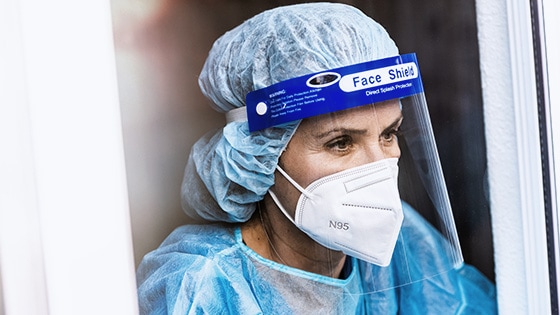
One in three registered nurses in the US may leave their current direct-patient-care role in the next year. That’s according to a McKinsey survey of more than 700 frontline nurses across the country, conducted in late November 2021. Remarkably, many of those thinking of leaving their position say that they may leave direct patient care altogether. Among the reasons to consider leaving, respondents cited chronic staffing shortages, an unsustainable workload, the emotional toll of their job, and the fact that the pandemic is wearing on—and that relief is not yet in sight. In a recent episode of The McKinsey Podcast, Gretchen Berlin, a registered nurse and McKinsey senior partner, discusses the circumstances that nurses are facing and how employers can improve their work experience. Among the top ways that nurses in the US say that their employers can support their well-being: provide more breaks, including breaks during shifts, paid time off, and opportunities for rotations. And to learn more about what nurses need? A leader can spend more time with nurses during their shifts. — Edited by Julia Arnous, an editor in McKinsey’s Boston office 

Follow our thinking 



Share these insights Did you enjoy this newsletter? Forward it to colleagues and friends so they can subscribe too.
Was this issue forwarded to you? Sign up for it and sample our 40+ other free email subscriptions here.This email contains information about McKinsey’s research, insights, services, or events. By opening our emails or clicking on links, you agree to our use of cookies and web tracking technology. For more information on how we use and protect your information, please review our privacy policy. You received this email because you subscribed to the Intersection newsletter. Manage subscriptions | Unsubscribe Copyright © 2022 | McKinsey & Company, 3 World Trade Center, 175 Greenwich Street, New York, NY 10007
by "McKinsey Intersection" <publishing@email.mckinsey.com> - 02:44 - 10 Feb 2022 -
An evangelical Christian and a climate scientist walk into a bar. Actually, no joke: They’re one and the same.
McKinsey&Company
Faith and science .

Talking about climate change The news • Emotions run deep. People are divided on climate change because “emotions are engaged deeply,” says climate scientist—and evangelical Christian—Katharine Hayhoe, who is known for bridging ideological divides. “People on the right, for example, deeply fear losing their liberties because of climate solutions.” For others already acting on climate change, despair can settle in when they realize that the problem is too big for any individual to fix. That’s why we should consider how we influence those around us, Hayhoe explains. Your decision to eat a plant-based burger, for instance, might make your friends want to try one, too. [NYT] • A disaster-stricken US. In 2021, extreme weather linked to climate change struck more than 800 US counties, reaching 40% of the country’s population, a new study shows. Global warming “has loaded the weather dice against us,” observes Hayhoe, one of the climate scientists quoted in this article. Last year alone, heat waves affected at least 80% of Americans. Flash floods, hurricanes, wildfires, and other natural disasters killed 656 people and caused more than $100 billion in damages. [WaPo] 
“Fifty percent of us feel hopeless and helpless [about] climate change. That’s why it’s so important to tell people that every single one of us has a role to play in fixing this.” 
Our insights • Connecting the dots. One of the biggest reasons people don’t act on climate change is “psychological distance,” says Hayhoe, who serves as chief scientist of the Nature Conservancy and whose latest book is Saving Us: A Climate Scientist’s Case for Hope and Healing in a Divided World. “Even those of us who are concerned about it still think it’s an issue for the future, for people far away, or for people … who hug trees,” Hayhoe adds. But if we connect the dots between what people already care about and how climate change affects them, we can reach “a surprising agreement” about how to work together, she contends. • Getting past fear. Many of us are paralyzed by fear or think we’re too insignificant to truly make a difference about the changing climate, Hayhoe says. But, as with the civil-rights movement or women getting the vote, the world changed radically when “ordinary, relatively insignificant people … used their voices to call for that better world, to advocate for change.” For a lively discussion on science, faith, and human psychology—and on how small conversations can have astonishing results—read the full interview. — Edited by Belinda Yu Get her take 
Was this forwarded to you? Sign up here. Or send us feedback — we’d love to hear from you. 

Follow our thinking 


This email contains information about McKinsey’s research, insights, services, or events. By opening our emails or clicking on links, you agree to our use of cookies and web tracking technology. For more information on how we use and protect your information, please review our privacy policy. You received this email because you subscribed to the On Point newsletter. Manage subscriptions | Unsubscribe Copyright © 2022 | McKinsey & Company, 3 World Trade Center, 175 Greenwich Street, New York, NY 10007
by "McKinsey On Point" <publishing@email.mckinsey.com> - 12:11 - 10 Feb 2022 -
Meeting the needs of the inclusive consumer
the Daily read
Shop with conscience .
Share this email 



AN ARTICLE A DAY, PICKED BY OUR EDITORS 
Do your social values shape your purchase decisions? Do you believe retailers should actively support Black-owned businesses and brands? If you answered yes to both questions, you are one of the estimated 100 million American shoppers who represent the inclusive consumer. And as a member of this large and influential group, you hold unique power to shape the retail narrative. Don't miss this new article, which lays out what retailers and brands need to do to keep your business and stay relevant. — Joyce Yoo, digital editor, New York The rise of the inclusive consumer Social values are shaping purchase decisions more than ever—and retailers that act now stand to attract consumers’ loyalty and spending. Support diverse entrepreneurs 

Quote of the Day “It has been an intense period full of unknowns. It’s hard to be self-aware enough to see the full impact of all these changes. I redeployed five times, and I got better at reintegrating each time. I had the benefit of practice, which allowed me to acknowledge what I was feeling, understand it better, and move forward.” —Adria Horn, military veteran and executive vice president of workforce at Tilson Technology Management, in a conversation with senior partner Aaron De Smet on the causes of the Great Resignation and how leaders might respond 
Chart of the Day See today's chart 
Also New 
Transforming capital projects to deliver net-zero emissions Net-zero capital expenditures will greatly exceed the current capacity of the projects sector. Collaborative transformation can help players deliver the net-zero project portfolio. Collaborate for net-zero 

Winning the war for talent in product development Skills shortages and a labor mismatch are challenging product-development teams. The solution could lie within the existing workforce. Fill skills gaps 

Author Talks: Building consumer trust with Google’s Neil Hoyne Without effective leadership and a clear strategy, software can only solve so much. Use data strategically 


Follow our thinking 



Share these insights Did you enjoy this newsletter? Forward it to colleagues and friends so they can subscribe too.
Was this issue forwarded to you? Sign up for it and sample our 40+ other free email subscriptions here.This email contains information about McKinsey’s research, insights, services, or events. By opening our emails or clicking on links, you agree to our use of cookies and web tracking technology. For more information on how we use and protect your information, please review our privacy policy. You received this email because you subscribed to the Daily Read newsletter. Manage subscriptions | Unsubscribe Copyright © 2022 | McKinsey & Company, 3 World Trade Center, 175 Greenwich Street, New York, NY 10007
by "McKinsey Daily Read" <publishing@email.mckinsey.com> - 06:07 - 9 Feb 2022 -
How COVID-19 changed the rules of ecosystems
Re:think
Ecosystems challenge everything Nine of the ten most valuable companies on earth are ecosystem companies. These are companies like Alphabet and Apple, which cut across industries and create value through a complex network of interconnected businesses. Ecosystems are a fundamental change in how value is created—so very different from the world where all companies operated in well-defined industries. And this shift to ecosystems is only going to accelerate. By 2030, ecosystems will play a major role in almost every aspect of global economy, driving around $80 trillion in annual revenue—a third of total global revenue.
COVID-19 accelerated this trend. That’s because the fundamentals of ecosystems are so customer friendly. They provide a single door into a world of services, kind of the way a smartphone is a simple device with lots of complexity behind it. Technology has made this possible. Ecosystems feature interconnected sets of services that allow users to address a variety of cross-sectoral needs in one integrated experience. Thanks to digital technologies, companies don’t have to content themselves with offerings limited by their industry’s traditional borders. Instead, they can try to serve customers along their entire journey, often by partnering with other companies in the ecosystem.
During the pandemic, this suited customers who preferred ordering things digitally to shopping at physical locations, especially older generations. They jumped online like never before. So, industries where older people traditionally drive a bigger part of the value, like wealth management or home care, had to leapfrog to digital ecosystems.
And guess what? It turns out that some incumbent companies, including telcos and banks, proved to be pretty good at shifting their business models and embracing ecosystems. They figured out how to apply their real strengths in an ecosystem economy. The pandemic didn’t just prompt the feeling of, “Oh, boy, we have to do this.” It also brought the feeling that, “We can do it.”
I don’t think every company must become an ecosystem platform. But every board, whether their companies are B2B or B2C, needs to understand how ecosystems are reshaping their current sector. Often, boards are good at tracking sparkly new technologies, like blockchain, IoT, and the metaverse. But they need to look below these enabling technologies and see that they are likely no longer competing within their industry for market share but in a broader, multitrillion-dollar ecosystem for customer ownership. That means different KPIs, different competitors. Competitors from the past can be your collaborators. Collaborators from the past can be your competitors.
The way the rules have changed is earth-shattering. It’s one thing to say in basketball, “Hey, we are changing the rules. From now on, there are no three-pointers.” That’s just a technology change. Shifting to an ecosystem is like saying, “Actually, we’re not going to use a basket anymore. It’s going to be a goal. There will be four teams, not two, and by the way, you can use your legs. The winner won’t be the team that gets the most points but the team that blocks more shots. The opponents will change every quarter. And by the way, the whole thing is now happening in VR!”
in annual revenue will be generated by ecosystems by 2030
That’s the scale of the change. And that means companies must rethink the very concept of strategy. They must move from strategy in certainty to strategy under constant uncertainty, which is a huge challenge. They need to be far more entrepreneurial. They need to accept far more failures. They need to fail fast and then try again. They need to run multiple parallel value propositions and ideas and assume that not all of them will work out. They must take more of a portfolio-management approach to strategy. Participating in ecosystems can also change the very management structure and decision-making process of companies.
These are hard things to do. But this is business the way customers want it. Ecosystems are here to stay, and while the biggest winners are customers, there is huge upside for companies. You can reach a lot more customers a lot faster. Acquiring customers is cheaper than ever. And if you do it right, and figure out the rules sooner than later, you can be the gateway to serve more customers more successfully than you ever have. It can create stock market recognition which in turn can further accelerate change. It could be the biggest business opportunity of our lifetime.
ABOUT THE AUTHOR
Miklós Dietz is a senior partner in McKinsey’s Vancouver office.
MORE FROM THIS AUTHOR
Ecosystem 2.0: Climbing to the next level
After a first wave of trials, incumbents are shaking up value chains to attract new ecosystem customers—and tap potentially huge pools of value.
How do companies create value from digital ecosystems?
Ecosystem strategies can generate significant value both by growing the core business and by expanding the portfolio into new products and services.
This email contains information about McKinsey’s research, insights, services, or events. By opening our emails or clicking on links, you agree to our use of cookies and web tracking technology. For more information on how we use and protect your information, please review our privacy policy.
You received this email because you subscribed to our McKinsey Quarterly alert list.
Copyright © 2022 | McKinsey & Company, 3 World Trade Center, 175 Greenwich Street, New York, NY 10007
by "McKinsey Quarterly" <publishing@email.mckinsey.com> - 05:22 - 9 Feb 2022 -
Invite for MD Abul: Tyk x IDC Webinar - APIs at the heart of digital strategy
Invite for MD Abul: Tyk x IDC Webinar - APIs at the heart of digital strategy
Find out what modern development practices and governance need to be adopted to maximise productivity and drive repeatable success.Hi MD Abul
Join us for an informative webinar to learn more about the priorities, challenges, and digital outcomes of a successful enterprise API Strategy from your market peers. IDC’s Market Analyst, Linus Lai will take you through the predictions & market trends for API Landscape in 2022. Find out what modern development practices and governance frameworks need to be adopted to maximise your productivity and drive secure yet repeatable success.
Martin Buhr, CEO from Tyk Technologies will share real-life examples of how organisations are using Tyk’s API Management platform to deliver better digital outcomes.
At the end of the webinar, you will receive a copy of the latest Tyk x IDC Infobrief entitled, “APIs at the Heart of Digital Strategy”.
Webinar details:
24 February 2022
9:00am UKT | 5:00 SGT
Tyk, 87a Worship Street, London, City of London EC2A 2BE, United Kingdom, +44 (0)20 3409 1911
by "Budhaditya Bhattacharya" <budha@tyk.io> - 02:02 - 9 Feb 2022 -
It’s all about people—even when it’s about tech
McKinsey&Company
Seven lessons to help generate value from tech .

Dare to go digital The news • New-tech troubles. Managers often underestimate the degree to which introducing new tech may incite fear and resentment in workers, says an MIT business school professor. The addition of new systems, technologies, and processes often leads to rank-and-file employees having to take on extra work. One common mistake that companies make when introducing new tech is having junior staffers do the training, which often doesn’t sit well with longer-tenured workers. Digital transformations aren’t straightforward, so they need employees’ cooperation to succeed. [WSJ] • Trillions on tech. Companies will spend an estimated $6.8 trillion or more on digital tech and initiatives from 2020 to 2023. Many such projects, however, end in failure. It’s tempting for business leaders to simply buy new tech or collect more data to try to achieve a digital transformation, but without broader changes in mindset, culture, and talent, those efforts won’t yield the desired benefits. Many organizations don’t have a clear idea of what the term “digital transformation” even means. At its essence, it means becoming an organization in which decisions are driven by data, not intuition. [HBR] 
Top performers are more than three times likelier than their peers to say they’ve pursued a transformation of their talent strategy in recent years. 
Our insights • People-focused plays. McKinsey surveyed hundreds of C-suite executives and tech leaders to learn what actions resulted in the most effective digital transformations. One finding is that people-focused plays delivered the most value: companies that changed the ways they attract, retain, and upskill tech talent captured the most business impact. Yet even though people-focused initiatives link closely with value creation, they’re low on many companies’ priority lists. • IT and business team up. The survey results also show that IT teams and business teams at top-performing organizations are likely to work together both to develop strategy and to deliver tech. And top performers are much more focused than others on measurement, even for metrics that aren’t tech specific. See the survey results to learn seven lessons on how tech transformations can create value. — Edited by Katherine Tam Check your tech 
Was this forwarded to you? Sign up here. Or send us feedback — we’d love to hear from you. 

Follow our thinking 


This email contains information about McKinsey’s research, insights, services, or events. By opening our emails or clicking on links, you agree to our use of cookies and web tracking technology. For more information on how we use and protect your information, please review our privacy policy. You received this email because you subscribed to the On Point newsletter. Manage subscriptions | Unsubscribe Copyright © 2022 | McKinsey & Company, 3 World Trade Center, 175 Greenwich Street, New York, NY 10007
by "McKinsey On Point" <publishing@email.mckinsey.com> - 10:14 - 8 Feb 2022 -
Talent, burnout, diversity, new power dynamics: New from McKinsey Talks Talent
the Daily read
Think ahead .
Share this email 



AN ARTICLE A DAY, PICKED BY OUR EDITORS 
Even as the pandemic persists, many organizations are asking more of their employees to return to the office. But workers’ priorities have changed, fueling the Great Attrition, as more employees demand greater flexibility when it comes to their jobs and their personal lives. “When you ask people what their number one concern is about coming back to the office, it’s work–life balance. It’s the commute,” says talent expert Bryan Hancock in the latest episode of the McKinsey Talks Talent podcast. “And at the same time, you ask people what the number one worry about staying at home is, and it’s work–life balance because there’s no boundary between home and the office.” What’s a leader to do? In this wide-ranging discussion, Hancock and fellow talent expert Bill Schaninger unpack that dichotomy, shifting power dynamics, burnout, diversity, and more. If you’re a leader, you won’t want to miss this conversation on talent and business in 2022. — Katherine Tam, digital editor, New York 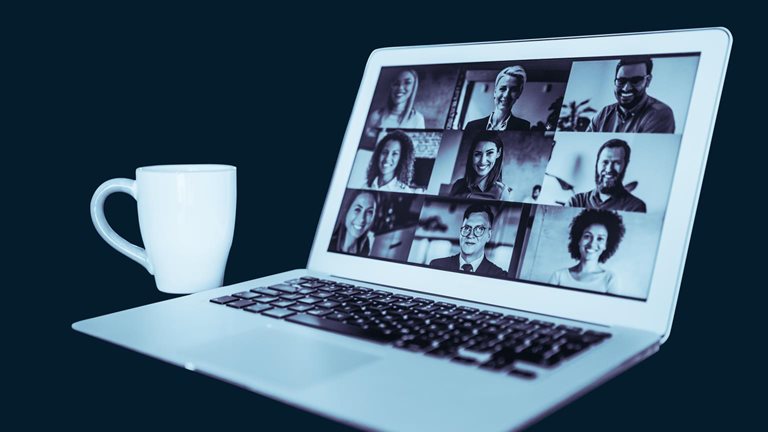
Back and forth: COVID-19’s impact on business in 2021—and today The years-long pandemic persists. How can companies continue to adapt? Think ahead 

Quote of the Day “The platinum rule mindset is, I'm going to treat others the way they want to be treated. My attention to who this person is and how they show up, and what their preferences are—and my tolerance, my patience, my kindness—it all shows up differently with that mindset of the platinum rule versus the golden rule.” —Scott Keller, senior partner and coauthor of forthcoming McKinsey book CEO Excellence, on the six mindsets of excellent CEOs 
Chart of the Day See today’s chart 
Also New 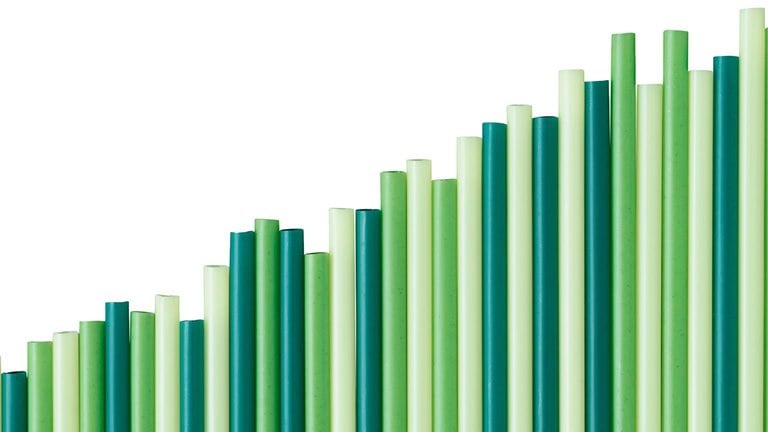

Building better capital projects through sustainability benchmarks As leaders across industries prioritize sustainability practices, a clear and defined set of metrics and benchmarks will be necessary to build sustainable capital projects. See the survey results 


How ‘Care at Home’ ecosystems can reshape the way health systems envision patient care A strategy around services in the home could enable health systems’ success in delivering patient-centered care. Explore changing medical patterns 


Unleashing the next wave of productivity in corporate business functions A how-to guide for maximizing the ROI of enterprise platform transformations in the consumer packaged goods industry Learn how to optimize 


Follow our thinking 



Share these insights Did you enjoy this newsletter? Forward it to colleagues and friends so they can subscribe too.
Was this issue forwarded to you? Sign up for it and sample our 40+ other free email subscriptions here.This email contains information about McKinsey’s research, insights, services, or events. By opening our emails or clicking on links, you agree to our use of cookies and web tracking technology. For more information on how we use and protect your information, please review our privacy policy. You received this email because you subscribed to the Daily Read newsletter. Manage subscriptions | Unsubscribe Copyright © 2022 | McKinsey & Company, 3 World Trade Center, 175 Greenwich Street, New York, NY 10007
by "McKinsey Daily Read" <publishing@email.mckinsey.com> - 06:17 - 8 Feb 2022 -
Building a better planet with satellite data
McKinsey&Company
Reach for the stars .
Share this email 



New from McKinsey & Company 
Building a better planet with satellite data Spire CEO Peter Platzer says the answers to some of Earth’s biggest problems can be found in space. Reach for the stars 



Related Reading 
Expectations versus reality: Commercial satellite constellations 
Get up to speed with McKinsey Themes 


Follow our thinking 


McKinsey Insights - Get our latest
thinking on your iPhone, iPad, or Android


Share these insights Did you enjoy this newsletter? Forward it to colleagues and friends so they can subscribe too.
Was this issue forwarded to you? Sign up for it and sample our 40+ other free email subscriptions here.This email contains information about McKinsey’s research, insights, services, or events. By opening our emails or clicking on links, you agree to our use of cookies and web tracking technology. For more information on how we use and protect your information, please review our privacy policy. You received this email because you subscribed to The Next Normal newsletter list. Manage subscriptions | Unsubscribe Copyright © 2022 | McKinsey & Company, 3 World Trade Center, 175 Greenwich Street, New York, NY 10007
by "McKinsey & Company" <publishing@email.mckinsey.com> - 12:54 - 8 Feb 2022 -
Gen Z is struggling with poor mental health. A targeted, digital approach can help.
McKinsey&Company
Pay it forward .

Disruption junction The news • More support, please. Members of Gen Z, as digitally native as they come, might have been expected to thrive in a remote working environment. But it turns out that the COVID-19 pandemic has been really tough on this cohort, whose members are just starting out in their careers and are craving more in-person engagement and mentoring. To engage Gen Z’s passion and potential, leaders can create a workplace that encourages open dialogue and the sharing of new ideas. [Fast Company] • ‘Friends’ for the first time. Gen Zers, still adjusting to the trials and tribulations of adult life, have sought comfort in the TV and fashion trends of the 1990s and early 2000s, before the internet become so ubiquitous. But while that may seem like harmless nostalgia, some experts point out that it also reflects uncertainty, anxiety, and loneliness. [Business Insider] 
Gen Zers, ranging from middle-school students to early professionals, are reporting higher rates of anxiety, depression, and distress than any other age group. 
Our insights • Why it matters. The behavioral-health challenges facing Gen Z are concerning. In a series of consumer surveys and interviews conducted by McKinsey, one in four Gen Z respondents (25%) reported feeling emotionally distressed, almost double the levels reported by millennial and Gen X respondents (13% each), and more than triple the levels reported by baby boomer respondents (8%). • How to help. Companies, healthcare leaders, and educators all have a role to play in supporting Gen Z. By creating and improving digital and social-media tools to which that generation responds, stakeholders can increase the number of Gen Zers who seek mental-health support. And because Gen Z cares deeply about diversity, there are opportunities to integrate care and early intervention by providing a more racially and ethnically diverse behavioral-health workforce. Read on to learn what actions can best meet the behavioral-health needs of Gen Z. — Edited by Barbara Tierney See the full survey 
Was this forwarded to you? Sign up here. Or send us feedback — we’d love to hear from you. 

Follow our thinking 


This email contains information about McKinsey’s research, insights, services, or events. By opening our emails or clicking on links, you agree to our use of cookies and web tracking technology. For more information on how we use and protect your information, please review our privacy policy. You received this email because you subscribed to the On Point newsletter. Manage subscriptions | Unsubscribe Copyright © 2022 | McKinsey & Company, 3 World Trade Center, 175 Greenwich Street, New York, NY 10007
by "McKinsey On Point" <publishing@email.mckinsey.com> - 12:10 - 8 Feb 2022 -
Climate risk and the opportunity for real estate
the Daily read
Adapt to change .
Share this email 



AN ARTICLE A DAY, PICKED BY OUR EDITORS 
How will climate change affect real estate? The net-zero transition is now top of mind for many in the industry. It’s no wonder: building climate intelligence will be central to value creation and strategic differentiation in real estate. The industry will also be crucial to mitigation efforts, considering that real estate drives nearly 40 percent of total global emissions. A new article lays out three actions that can help real-estate players make the climate transition—don't miss it. — Torea Frey, managing editor, Seattle 
Climate risk and the opportunity for real estate Real-estate leaders should revalue assets, decarbonize, and create new business opportunities. Here’s how. Adapt to change 

Quote of the Day “To spend a year and a half being told you’re not good enough, and finding a way to reestablish your confidence, was really important for me and carried over into what I did outside of football.” —Jason Wright, president of the Washington Commanders football team and former McKinsey partner, in a new interview from McKinsey’s My Leadership Journey series 
Chart of the Day 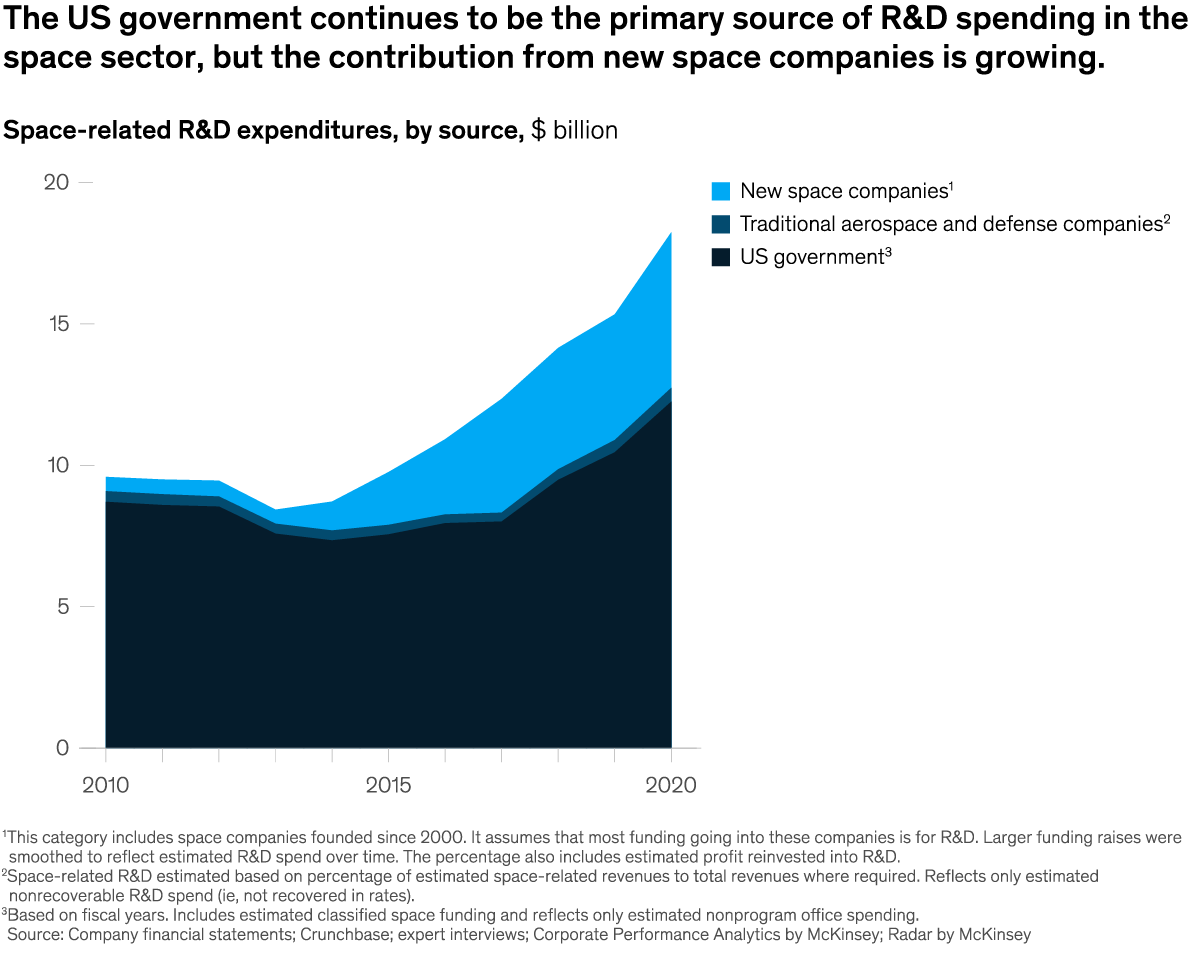
See today’s chart 
Also New 

Leveraging infrastructure investment to meet net-zero goals Investors have critical roles to play in delivering sustainable infrastructure to address the rising risks of climate change. Developing innovative solutions can accelerate the energy transition. Read the interview 


Building the US public-health workforce of the future State and local health departments have an imperative to invest in their workforces as they build toward endemic COVID-19 and improving other health outcomes. Here are six strategies to act on now. Take a new approach 


Forward Thinking on the social contract in a postpandemic world with Minouche Shafik and Andrew Sheng “Our social contract is broken. And that is at the heart of why our politics is so divided and so many citizens around the world are disappointed and frustrated.” “Modern society is killing Mother Nature. And if you kill Mother Nature, you kill ourselves. We really need to achieve a social contract between us and other humanity and also Mother Nature. And this conversation is only beginning.” Two stark views on the state of today’s social contract. Tune in 


Follow our thinking 



Share these insights Did you enjoy this newsletter? Forward it to colleagues and friends so they can subscribe too.
Was this issue forwarded to you? Sign up for it and sample our 40+ other free email subscriptions here.This email contains information about McKinsey’s research, insights, services, or events. By opening our emails or clicking on links, you agree to our use of cookies and web tracking technology. For more information on how we use and protect your information, please review our privacy policy. You received this email because you subscribed to the Daily Read newsletter. Manage subscriptions | Unsubscribe Copyright © 2022 | McKinsey & Company, 3 World Trade Center, 175 Greenwich Street, New York, NY 10007
by "McKinsey Daily Read" <publishing@email.mckinsey.com> - 06:55 - 7 Feb 2022 -
How leaders think about diversity: A guide
Leading Off
Equal opportunity .
Share this email 



ESSENTIALS FOR LEADERS AND THOSE THEY LEAD 
February is Black History Month, and a time for continued reflection on addressing racial disparities. Faced with urgent calls for equity in the workplace, organizations must take a hard look at gender and cultural representation on their executive teams. The good news is that the business case for diversity and inclusion in corporate leadership is stronger than ever; the bad news is that progress remains slow and has even declined in some cases. What should leaders do to offer a level playing field for advancement and opportunity? This week, let’s look at how to lay the turf in a systematic way. AN IDEA 
Make the business case—then go beyond it Diversity in leadership pays off. A McKinsey survey of more than 1,000 large organizations in 15 countries found that companies with the most gender and ethnic diversity on executive teams outperform less diverse companies on profitability. But diversity goes beyond the data: there is also a moral case to be made for doing the right thing. The principles of rising stakeholder capitalism call for taking into account the interests of not only shareholders but also customers, suppliers, workers, and communities, and purpose-driven organizations are looking to have a unique, positive impact on society. As these trends gather steam globally, organizations have a moral responsibility to advance equity and justice in their workplaces, including moving diverse talent into the C-suite. 
A BIG NUMBER 60 That’s the number of Black CEOs there would be if representation in the Fortune 500 matched the 12 percent Black population density of the US. But just four Black chief executives—about 1 percent of all Fortune 500 heads of companies—make the list. And though the number of women leading Fortune 500 companies has hit an all-time high of 41, they still account for only 8.1 percent of the total. Women of color are losing ground at every step in the pipeline—their representation plunges more than 75 percent between the entry level and the C-suite, and they account for only 4 percent of top leaders. If you’re moving into a CEO role, grab the opportunity to move the needle on diversity, as most major policy changes occur in the first two to three years of a CEO’s tenure. 

A QUOTE “We seem to have hit a wall.” That’s Darren Walker, president of the Ford Foundation, quoted in a New York Times article on discrimination in corporate America. Research shows that despite the efforts of many well-meaning companies, Black executives still face systemic inequity in hiring, compensation, promotion, and retention practices, and they are more likely to encounter prejudice than any other ethnic or racial group. The roots of the problem go deep and there are no easy solutions, but some emerging best practices include expanding the sources of talent, supporting Black entrepreneurship, building capabilities and skills to advance the next generation of Black leaders, and holding leaders and their organizations accountable for progress. 
A SPOTLIGHT INTERVIEW 
Racial wealth disparities may cost the US close to $1 trillion a year in economic output, says McKinsey partner Shelley Stewart III in this podcast on strategies to promote racial equity. “Black Americans in particular face staggering inequality that is only matched in some instances by the Native American population, at least in the US,” he says. For business leaders, a key tactical step to address this challenge is understanding the equity implications of every decision they make. “Whether it is how you recruit, promote, develop, or pay, you need to take that equity lens,” urges Stewart. He also notes the importance of investing in Black community development, education, and entrepreneurship as a way to advance Black economic mobility. 
IN SEARCH OF EXCELLENCE 
There’s no checklist for what makes a good CEO, but outstanding chief executives have certain attributes in common, new McKinsey research shows. For example, one quality is universal: “Regardless of context, regardless of circumstance, regardless of industry, there is an aspect around great CEOs: great CEOs are bold,” says McKinsey’s Vik Malhotra in this Author Talks interview. To increase diversity in their leadership ranks, organizations should consider the fundamental qualities that make C-suite leaders exceptional—and enhance them with the strengths that diverse perspectives and experiences can bring. Lead equitably. — Edited by Rama Ramaswami, a senior editor in McKinsey’s Stamford office 

Follow our thinking 



Share these insights Did you enjoy this newsletter? Forward it to colleagues and friends so they can subscribe too.
Was this issue forwarded to you? Sign up for it and sample our 40+ other free email subscriptions here.This email contains information about McKinsey’s research, insights, services, or events. By opening our emails or clicking on links, you agree to our use of cookies and web tracking technology. For more information on how we use and protect your information, please review our privacy policy. You received this email because you subscribed to the Leading Off newsletter. Manage subscriptions | Unsubscribe Copyright © 2022 | McKinsey & Company, 3 World Trade Center, 175 Greenwich Street, New York, NY 10007
by "McKinsey Leading Off" <publishing@email.mckinsey.com> - 02:15 - 7 Feb 2022 -
The sporting-goods industry gets back in shape
McKinsey&Company
Get in the game .

Game on The news • Games people play. Can’t get to the gym? Virtual workouts are almost as good as gym sessions—they burn a significant number of calories and can be done in small spaces. Some of the new virtual-reality (VR) apps offer stimulating visuals and sophisticated tracking abilities while you’re boxing, dancing, or cycling. Steep prices and bulky headsets are among the downsides, but fitness buffs with an appetite for novelty are giving VR a try. [WSJ] • Movers and shakers. Wearing a fitness tracker might help you not just monitor your exercise but also intensify it. A study of more than 16,000 people showed that those who started wearing exercise monitors increased their levels of physical activity. But smart watches or wearables alone won’t get you off the couch. They work best in combination with other programs and incentives for changing fitness habits, experts say. [CNN] 
Digital forms of individual or community-based exercise have become more popular and have created new possibilities for sporting-goods companies. 
Our insights • Hitting it out of the park. The sporting-goods market slumped at the start of the pandemic but has made a swift comeback, with consumers in China and the US fueling recovery. In sportswear, growth is expected to reach 8% to 10% a year through 2025, with the market totaling €395 billion globally. But profits are becoming concentrated among a small group of players, which means the rest must adapt their business models quickly. • Be on the ball. Last year saw major changes in the sporting-goods industry as sales recovered to almost prepandemic levels. The trends we highlighted in 2021—among them, the explosion of digital commerce and changes in consumer behavior—will continue this year, but exciting new developments are shaping up as well. Read our analysis of the top five trends that will transform the sporting-goods market in 2022 and the strategies companies must adopt to meet consumer expectations. — Edited by Rama Ramaswami Play for keeps 
Was this forwarded to you? Sign up here. Or send us feedback — we’d love to hear from you. 

Follow our thinking 


This email contains information about McKinsey’s research, insights, services, or events. By opening our emails or clicking on links, you agree to our use of cookies and web tracking technology. For more information on how we use and protect your information, please review our privacy policy. You received this email because you subscribed to the On Point newsletter. Manage subscriptions | Unsubscribe Copyright © 2022 | McKinsey & Company, 3 World Trade Center, 175 Greenwich Street, New York, NY 10007
by "McKinsey On Point" <publishing@email.mckinsey.com> - 12:34 - 7 Feb 2022 -
The week in charts
the Daily read
Carbon dioxide emissions, health equity, and more .
Share this email 



ALL THE WEEK’S DATA THAT'S FIT TO VISUALIZE 
Our Charting the path to the next normal series offers a daily chart that helps explain a changing world—during the pandemic and beyond. In case you missed them, this week’s graphics explored energy’s share of carbon-dioxide emissions, health equity in the workplace, the banking industry’s great divergence in valuations, why fragmented retail is poised to be transformed by “eB2B” players, and the value of human voice to customer experience. FEATURED CHART The price of civilization 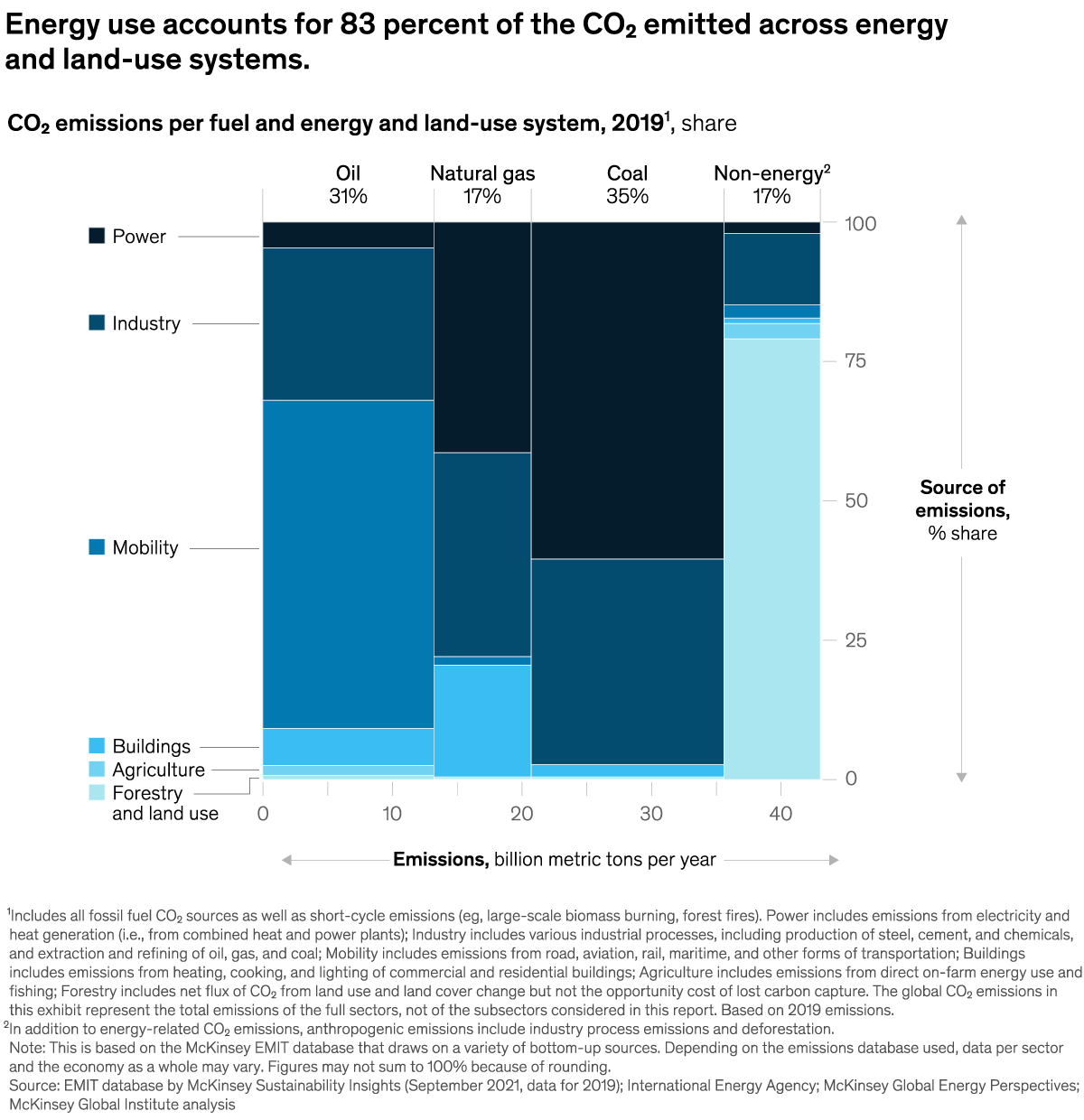
See more 



This week’s other select charts Is that covered? Banks get bypassed B2B still ordering in analog How may I assist you today? 

Follow our thinking 



Share these insights Did you enjoy this newsletter? Forward it to colleagues and friends so they can subscribe too.
Was this issue forwarded to you? Sign up for it and sample our 40+ other free email subscriptions here.This email contains information about McKinsey’s research, insights, services, or events. By opening our emails or clicking on links, you agree to our use of cookies and web tracking technology. For more information on how we use and protect your information, please review our privacy policy. You received this email because you subscribed to The Week in Charts newsletter. Manage subscriptions | Unsubscribe Copyright © 2022 | McKinsey & Company, 3 World Trade Center, 175 Greenwich Street, New York, NY 10007
by "McKinsey Week in Charts" <publishing@email.mckinsey.com> - 04:00 - 5 Feb 2022
